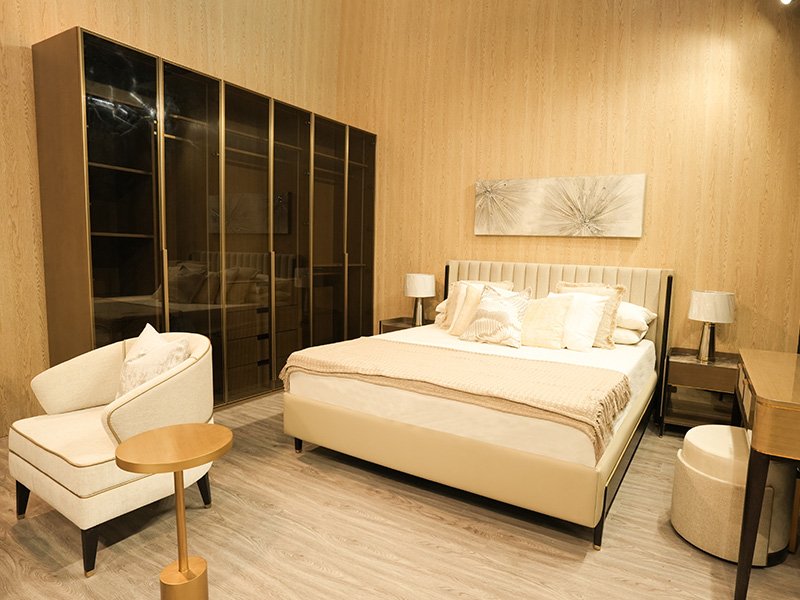In today’s highly competitive hospitality industry, standing out goes far beyond excellent service. Guests expect a complete experience that reflects the values, style, and character of the hotel they choose. While architecture, branding, and marketing all play their part, one often overlooked yet vital component is custom hotel furniture. More than just functional pieces, furniture choices define a hotel’s personality, creating impressions that last long after a guest’s stay.
Understanding Brand Identity in Hospitality
Brand identity is what sets one hotel apart from another. It is the combination of visual elements, messaging, and design features that convey a hotel’s unique essence. From the logo to the lobby layout, every detail communicates a story. In hospitality, furniture is central to this story because it impacts how guests feel the moment they step into a space. Well-designed custom hotel furniture allows hotels to express their brand’s personality through tangible, functional design.
The Role of Furniture in Shaping Guest Experiences
The design of a chair, the comfort of a bed, or the style of a lobby sofa plays a powerful role in shaping a guest’s experience. A sleek modern desk in a business hotel sets a professional tone, while a handcrafted wooden bench in a boutique hotel may create a sense of warmth and authenticity. Guests form opinions quickly, and custom hotel furniture helps ensure those opinions align with the hotel’s identity. Beyond aesthetics, comfortable and thoughtfully designed furniture enhances overall satisfaction, influencing whether guests return or recommend the property.
Why Custom Furniture Matters for Hotels
Generic, mass-produced furniture might serve basic functions, but it rarely communicates individuality. Hotels that rely solely on standard options risk blending into the background, especially in destinations saturated with choices. Custom hotel furniture allows properties to stand out by offering designs that are tailored to their theme, location, and target audience. This differentiation not only sets them apart visually but also establishes a deeper connection with guests, who often appreciate thoughtful details.
Aligning Custom Furniture with Brand Story
Furniture is more than a place to sit or sleep; it is a storytelling tool. A luxury hotel may opt for velvet upholstered sofas and marble-topped tables to emphasize sophistication, while a seaside resort may lean toward rattan and natural wood for a breezy, relaxed feel. Through custom hotel furniture, properties can translate abstract brand values—luxury, relaxation, heritage—into physical experiences. When done well, these pieces become silent ambassadors of the brand’s promise.
Design Consistency Across Hospitality Spaces
A hotel’s identity should feel consistent from the lobby to the guest rooms and beyond. Custom hotel furniture ensures that this consistency is maintained across every space. A lobby chair, a bedside table, and a restaurant booth may all differ in form, but they can share a cohesive style, material, or finish that ties the hotel together. Guests notice this harmony, often subconsciously, and it reinforces the sense of professionalism and care invested in their stay.
Custom Furniture for Different Hotel Types
Every type of hotel benefits from custom designs:
- Boutique hotels thrive on uniqueness. Distinctive pieces help reinforce their individuality.
- Luxury hotels require elegance and exclusivity, which can only be achieved with tailored, high-end designs.
- Business hotels need furniture that reflects professionalism while also offering convenience.
- Resorts demand comfort-driven designs that highlight relaxation, often blending indoor and outdoor living seamlessly.
By creating furniture that suits their target market, hotels can better reflect their positioning in the industry.
Materials and Finishes that Reflect Brand Identity
Material choice plays a huge role in defining brand identity. A rustic lodge may emphasize reclaimed wood and earthy tones, while an urban hotel might highlight steel, glass, and bold finishes. Custom hotel furniture allows complete control over these decisions. Even fabric selections, such as leather for luxury or linen for casual comfort, help reinforce the message a hotel wants to send. Finishes are equally important; matte tones, glossy polish, or distressed effects can instantly communicate style and mood.
Enhancing the Guest Journey with Custom Pieces
Each stage of a guest’s journey is influenced by design:
- Reception and lobby: Statement furniture welcomes guests and sets the tone.
- Guest rooms: Beds, chairs, and desks reflect the brand promise of comfort and style.
- Restaurants and bars: Dining chairs and tables enhance ambiance while ensuring function.
- Outdoor areas: Poolside loungers and garden seating extend the identity into open-air spaces.
By thoughtfully designing each of these zones with custom hotel furniture, hotels create a seamless journey that feels aligned with their brand from start to finish.
Balancing Comfort and Brand Expression
Furniture should not only look appealing but also provide exceptional comfort. An elegant lounge chair that strains the back or a stylish bed with poor ergonomics will harm a guest’s impression, regardless of its appearance. The beauty of custom hotel furniture is that it balances brand expression with comfort, ensuring that guests enjoy both aesthetics and usability.
Integrating Local Culture into Furniture Design
Hotels often act as cultural ambassadors, particularly for international travelers. Incorporating local craftsmanship, patterns, or materials into custom hotel furniture helps create a stronger connection to place. A Moroccan riad with hand-carved wooden tables or a Japanese hotel with minimalist tatami-inspired designs provides guests with a sense of authenticity, making their stay more memorable and meaningful.
Technology Integration in Custom Hotel Furniture
Modern travelers expect more than just traditional amenities. Today’s custom hotel furniture often integrates technology, such as built-in charging ports, hidden lighting, or smart desks for business use. These elements not only meet guest expectations but also communicate that the hotel is progressive and attentive to detail. Technology blended seamlessly into furniture reflects a forward-thinking brand image.
Sustainable Custom Furniture and Brand Perception
Sustainability is no longer a trend—it’s an expectation. Hotels that prioritize eco-friendly practices appeal to a growing demographic of environmentally conscious travelers. Through custom hotel furniture, properties can choose responsibly sourced wood, recycled materials, or low-impact finishes. Highlighting these efforts also boosts brand reputation, as guests are increasingly drawn to businesses that demonstrate responsibility toward the planet.
The Role of Color and Style in Brand Expression
Colors influence mood and perception. For instance, a coastal hotel may use whites, blues, and sandy tones, while an urban luxury hotel may prefer darker shades with metallic accents. Style also plays a key role: modern minimalism, classic elegance, or bohemian chic all convey distinct brand messages. Custom hotel furniture ensures that both color and style perfectly align with the brand’s vision.
Flexibility and Adaptability in Custom Furniture
Hotels often need spaces that serve multiple purposes. A conference room may double as an event space, or a restaurant may host both casual breakfasts and elegant dinners. Modular custom hotel furniture offers the flexibility to adapt spaces while maintaining consistent design identity. Adaptability also ensures that hotels remain relevant as design trends evolve without losing their brand essence.
The Competitive Advantage of Custom Hotel Furniture
With countless hospitality options available, differentiation is crucial. Custom hotel furniture offers a competitive edge by making spaces memorable, photogenic, and aligned with guest expectations. These details can encourage positive reviews, repeat stays, and organic promotion on social media, where visually striking furniture often becomes a highlight of guest photos.
Working with a Hotel Furniture Supplier
The success of a custom design project depends on selecting the right partner. A reliable hotel furniture supplier should understand the brand vision, provide quality craftsmanship, and deliver on time. Collaboration between designers, hoteliers, and suppliers ensures that every piece of custom hotel furniture enhances the overall identity of the property while meeting functional requirements.
Case Studies of Custom Furniture in Hospitality
- A luxury hotel that introduced marble-accented furniture to emphasize exclusivity.
- A boutique property that used handcrafted local wood to tell its regional story.
- A resort that focused on comfort-driven outdoor furniture to extend its brand of relaxation.
These examples highlight how custom designs directly influence the way guests perceive and remember their stays.
Long-Term Value of Custom Hotel Furniture
While custom designs may initially cost more, the long-term benefits outweigh the investment. Durable materials reduce replacement costs, while thoughtful designs strengthen brand reputation. Guests remember hotels that make them feel comfortable and valued, and custom hotel furniture helps build those lasting impressions. Ultimately, these investments translate into higher ROI through loyalty, positive reviews, and repeat business.
Conclusion
Furniture is far more than functional décor—it is a vital element of brand identity. Hotels that embrace custom hotel furniture are better positioned to stand out in a competitive industry, offering unique, comfortable, and memorable experiences. By aligning design choices with brand values, culture, and guest expectations, hotels create spaces that resonate deeply with visitors. The result is not only an enhanced brand identity but also stronger guest loyalty and long-term success.



